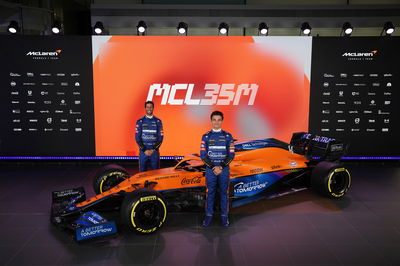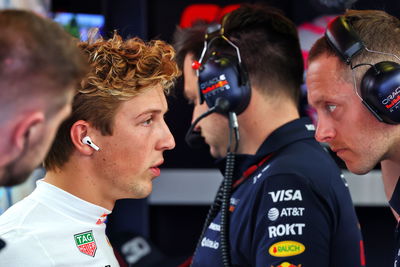15 circuits that could hold races on a rotational F1 calendar

A record calendar featuring 23 races has been scheduled for the upcoming 2021 Formula 1 season, despite the Australian Grand Prix already being postponed and pushed back to a later slot in November.
In his first major interview since taking over as F1’s new CEO, Stefano Domenicali acknowledged that the situation remains fluid amid the ongoing coronavirus pandemic - which forced 13 planned races to be cancelled last year - and that the sport has alternative venues on standby in the event of further possible changes in the coming weeks and months.
Intriguingly, Domenicali also suggested that he would be in favour of staging races on a rotational basis in future F1 calendars, after five circuits not originally on the 2020 schedule - Mugello, the Nurburgring, Portimao, Imola and Istanbul - stepped in to host rounds last year with great success.
“We may go to a situation where maybe we could go back to a fewer number of races, maybe the chance of having a rotation, a possibility for certain grands prix, keeping a focus on different areas,” Domenicali told Sky.
“So this is something that is in our plan to think carefully this year, getting ready for when the world would be normal again.”
Inspired by Domenicali’s comments, we’ve pulled together 15 race circuits which could, theoretically at least, land themselves a spot on a rotational F1 calendar in the future.
Imola
The Autodormo Enzo E Dino Ferrari made its long-awaited return to the F1 calendar last year, hosting the newly-named Emilia Romagna Grand Prix. It’s comeback received a glowing review from the drivers and we will get a second chance to see modern-day F1 cars around the venue in 2021 as it once again acts as a stand-in, this time as the second round of the season. Would surely be considered as a future rotational option.
Portimao
Like Imola, The Algarve International circuit is set to make a return to the F1 calendar this year, with the Portuguese Grand Prix expected to fill in as the third race of the season on 2 May, having staged F1 cars for the very first time last year. The fast and flowing undulating track went down a storm with drivers and fans alike in 2020, and F1 would be on to a winner by making it a more regular fixture on the calendar.
Nurburgring
The Nurburgring GP-Strecke hosted its first F1 race in seven years in 2020 when it staged the Eifel Grand Prix in October. While the race was hardly a classic, it was a welcome return for a circuit which is familiar with an alternating pattern on the calendar, having interchanged with Hockenheim as the home of the German GP between 2007 and 2013.
Istanbul
Istanbul was the third former venue to feature as a stand-in replacement round on the rewritten 2020 F1 calendar, producing a wet and wild spectacle for a thrilling race which also happened to crown Lewis Hamilton as world champion for a record-equalling seventh time. Turkey’s return to F1 after a nine-year absence was well received among drivers and fans alike and it would surely be a contender for a future rotational slot.
Mugello
Mugello made quite an impression on its first go at hosting grand prix racing as it formed a unique back-to-back with the Italian Grand Prix to celebrate Ferrari’s 1000th GP. The inaugural race was hugely dramatic and saw one of the craziest F1 incidents of all-time with a huge multi-car pile-up during a Safety Car restart. The drivers were left in unanimous awe by the fast and sweeping, rollercoaster-like track and said that they would love to see the Tuscan venue return to the calendar in future.
Hockenheim
Last used by F1 in 2019, Hockenheim boasts vast experience at holding F1 events and is a popular venue for the drivers. It is a standout choice for a potential spot on an alternating F1 calendar and has a habit of producing some exciting races - you only need to look at the last two German GPs for proof of that.
Sepang
The Malaysian GP dropped off the F1 calendar after the 2017 due to the huge financial burden of hosting the race and a lack of attending fans. If money-related issues could be resolved, Sepang would certainly be a viable option for F1 to consider, with its fast and flowing layout able to deliver some great racing. Not to mention the unpredictable weather that has so often turned races upside down.
Jerez
F1 was understood to have been considering a return to Jerez last year in a bid to bolster its calendar before Istanbul Park stepped in. The Spanish circuit last hosted an F1 race back in 1997 when it staged the controversial and dramatic 1997 season-ending European Grand Prix. It has recently held Formula 2 and MotoGP races and could be considered for a rotational appearance.
Indianapolis
Indianapolis’ road course has previously hosted F1 on 19 occasions but not since the 2007 United States Grand Prix. Famed for a controversial finish in 2002 and the farcical, embarrassing six-car start amid a tyre war between Bridgestone and Michelin. A return to the Indianapolis Motor Speedway has been mooted ever since Roger Penske’s takeover and a circuit revamp, with FIA president Jean Todt saying the circuit “has all the ingredients” of an F1 venue. A second race in the US would appeal to F1’s American owners Liberty Media.
Dubai Autodrome
The Dubai Autodrome has never welcomed F1 cars but it is a popular venue for GT and Endurance racing. A combination of fast sweeping corners - particularly in the first sector - and its modern facility gives the circuit some potential to host F1 machinery and it could form a Middle East back-to-back with Bahrain or Abu Dhabi, or alternative with either.
Fuji Speedway
Fuji Speedway pulled the plug on hosting the Japanese Grand Prix after it last held the event in 2008, blaming cost-cutting needs amid the global economic downturn for its decision. The venue had swapped with Suzuka in the past and could return in a similar deal, given F1 is unlikely to hold two races in Japan in one season. Sitting at the base of Mount Fuji, the picturesque circuit has both a full and short configuration that F1 could use, as well as one of the longest straights in motorsport.
Buriram International Circuit
An Asian venue which could offer Alex Albon a home grand prix if he successfully seals a return to the F1 grid in the future. Never before has the Hermann Tilke-designed Buriram circuit hosted F1, but since opening its doors in 2014 it has been a home to both Super GT and MotoGP.
Buddh
The Buddh International Circuit is highly unlikely to make a comeback, but it was a fun layout that challenged the drivers during the three years it hosted F1. It would need a big revamp to get back into a position to be able to welcome F1 cars again, not to mention finding a resolution to the logistical, financial and political reasons it dropped off the calendar in the first place.
Kuwait Motor Town
Like Buriram, the Kuwait Motor Town circuit has never held F1, which is hardly surprising given it only broke ground in 2017 and opened in 2019 as a state-of-the-art, modern facility. It is up to spec to host F1 events, featuring 20-turns that run in an anti-clockwise direction to make up a total track length of 5.608kms. It could work as a left-field option for F1 to provide the drivers with a new and unique challenge.
Kyalami
Kyalami is the only circuit on this list not to have FIA Grade 1 status, meaning it technically could not hold a grand prix. However, it wouldn’t take much extra finance to bump it up a level from its current status following substantial redevelopment. F1 has expressed an interest in reviving the South African Grand Prix, while the circuit has a desire to host the sport again, having not been part of the calendar since 1993.












